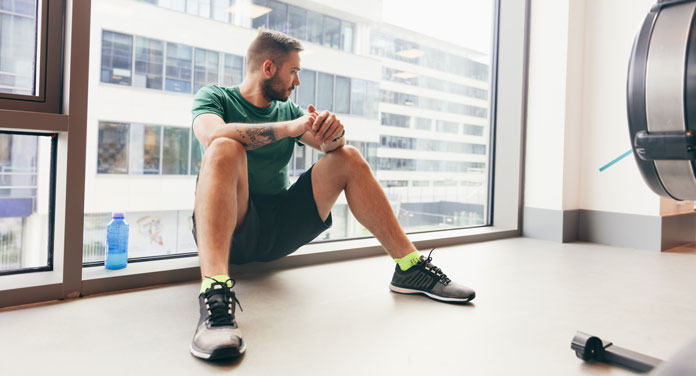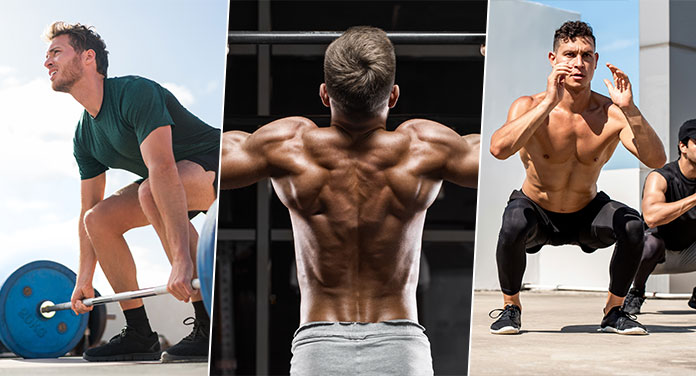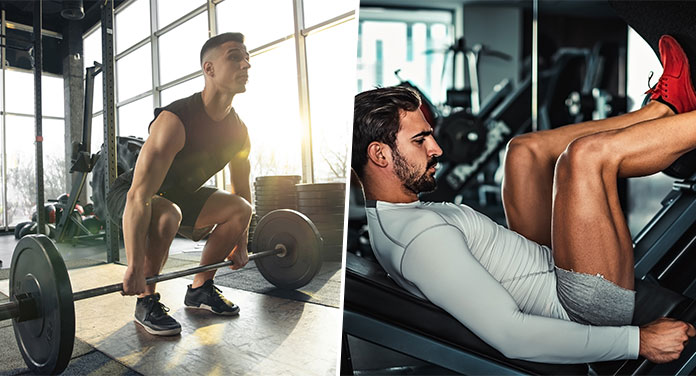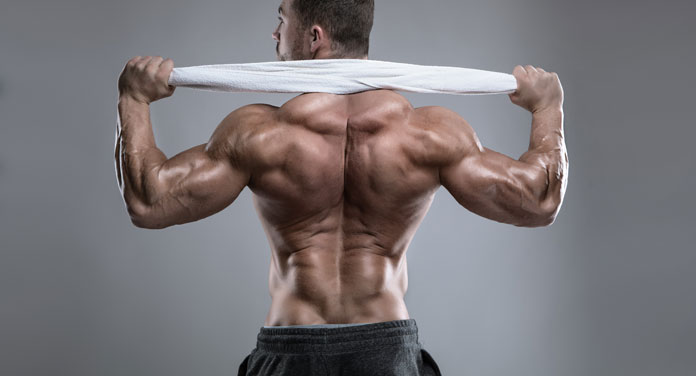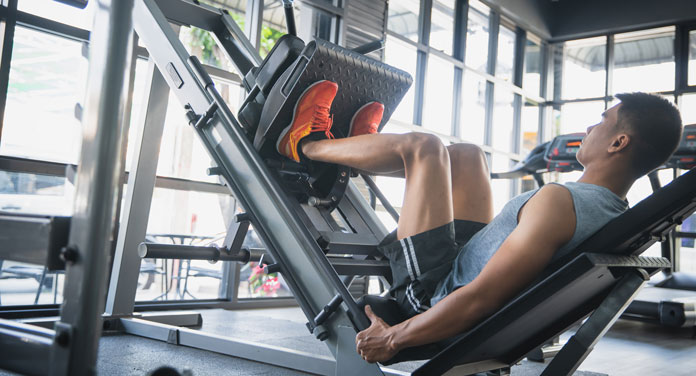Post-workout routine dos and don’ts. In order for muscles to be built up, you have to repeatedly set muscle stimuli through regular training. However, that alone is not enough. With the right post-workout routine, muscle building can be effectively supported.
Conversely, there are of course unfavorable behaviors that can boycott your training success. In the following, we would like to introduce you to the most important dos and don’ts after training.
5 Doses For Your Post Workout Routine
The following habits will help you build muscle faster and more effectively:
1. Give Your Muscles Regular Rest Days
This tip may sound a bit surprising at first, but it is essential for your training success. The magic word is regeneration. The muscles don’t grow the moment you lift the dumbbells, but in the days that follow.
During training, microscopic injuries occur in muscle tissue. The body then tries to repair these cracks. The stressed tissue becomes thicker in the course of the regeneration process. The desired muscle growth can now be observed from the outside.
However, this mechanism only works if the body is given enough time to complete the repair process. For this reason, daily training is rather counterproductive. Depending on the type and intensity of the training, the muscles need about 48 hours of rest. However, this applies to each muscle group! As a result, you can easily train your leg and buttock muscles today and focus on your upper body tomorrow.
2. Eat Enough Protein
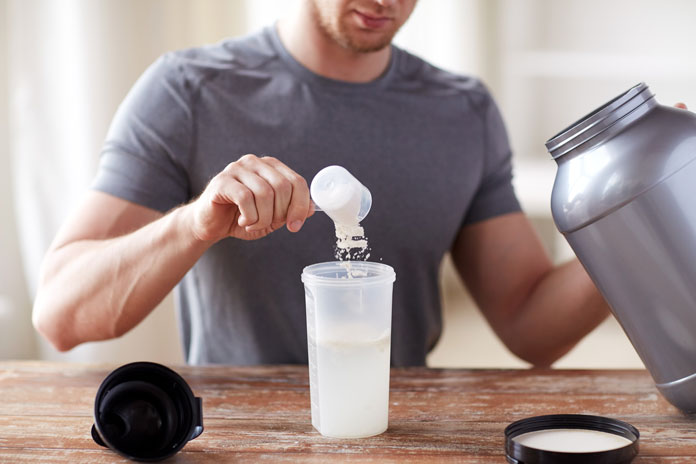
After exercise, the body craves nutrients. In order to optimize the success of the training, the post-workout meal is of particular importance. Proteins play a key role in this. Muscles are largely made up of protein. Accordingly, they need this nutrient in particular to regenerate.
For successful muscle building, it is recommended to consume around 1.5 grams of protein per kilogram of body weight. Protein shakes can help you to cover the increased need quickly and easily. However, make sure you eat a balanced and varied diet.
The Following Foods Are Particularly Rich In Protein:
Animal protein sources:
• Cottage cheese
• Cheese
• Fish
• Meat (preferably chicken or beef)
• Eggs
Vegetable protein sources:
• Spinach
• Legumes (lentils, beans, chickpeas)
• Broccoli
• Mushrooms
• Nuts (especially peanuts)
• Seeds
If you’re vegan, you’ll probably find it a little harder to meet your protein needs. Conventional protein shakes with whey protein are of course out of the question for you to supplement your protein intake. However, there are now numerous vegan alternatives based on soy, hemp, or rice protein.
3. Replenish Your Carbohydrate Stores After The Post Workout Routine
Drinking a protein shake immediately after a workout can help you make the most of the anabolic window. As such, the period immediately after training is called. The anabolic window is about two to three hours. During this period, your organism processes the nutrients supplied particularly efficiently. Use this fact to help your body build muscle.
So eat a balanced meal two to three hours after exercise. This also applies if you have already had a protein shake. Your post-workout meal should be high in both protein and carbohydrates. After eating carbohydrate-rich foods, the pancreas releases the hormone insulin. Insulin acts as a transport hormone. It transports the nutrients directly into the cells. The muscle is therefore supplied quickly and reliably.
Incidentally, insulin improves protein absorption in the muscles. Simply put, this means that without carbohydrates, the body cannot properly utilize the protein that is important for muscle building. Healthy protein-carbohydrate combinations are e.g. B. Potatoes with quark or rice with chicken.
4. Provide Your Body With Magnesium
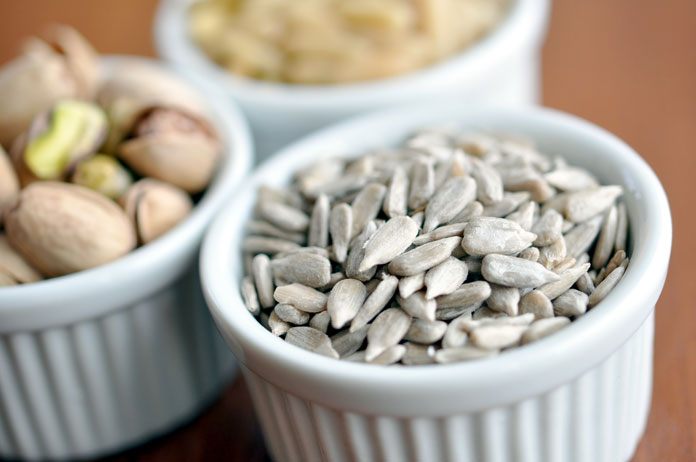
Surely you have heard of muscle cramps caused by magnesium deficiency. This can be very uncomfortable. When you exercise, you not only lose fluids, but you also sweat out minerals, including magnesium. A magnesium deficiency has a negative effect on the regeneration of your muscles and thus on muscle building. Therefore, you should keep an eye on your magnesium balance.
If you already suffer from muscle cramps (usually in your calves), you already have a serious deficiency. In this case, taking magnesium supplements makes sense. However, it would be much better if you didn’t let it get that far in the first place. Incorporate magnesium-rich foods into your daily diet.
The Following Foods Are Particularly Rich In Magnesium:
• Bananas
• Sunflower seeds
• Rolled oats
• Lentils
• Walnuts
• Almonds
• Cashew nuts • Bran • Spinach •
Wholegrain products
5. Treat Yourself To A Post-Workout Massage
A post-workout massage should be the pinnacle of your post-workout routine. The latest scientific studies confirm that massaging after training shortens the regeneration time and even improves muscle strength in the long term. Working out the lactic acid that builds up in the muscles can feel painful at first. Afterward, however, you will feel a soothing relief.
A professional massage after exercise would of course be ideal, but not everyone can afford it for cost reasons. A good alternative is to use a foam roller. With this practical tool, you can easily perform a self-massage. Just lay your back on the roller and start moving. If you find a sore spot, work on it until the tension releases.
Keep using the right breathing technique. Breathe in deeply through your nose and slowly out through your mouth. The foam roller is not only suitable for the back, but also for massaging the thigh and calf muscles. To do this, place the roller under your legs, support yourself with your hands and start the roller massage.
6 Don'ts For Your Post Workout Routine
You should refrain from the following habits if you want to build muscle quickly and healthily:
1. You Drink Post-Workout Alcohol
Opinions differ on the subject of alcohol and sport. Some athletes see this as a little more relaxed, others consistently do without it. The fact is that alcohol deprives the body – and thus also the muscles – of water. After exercise, however, the muscle is dependent on the supply of minerals and nutrients in order to regenerate optimally. If you are dehydrated, the supply circuit no longer works properly. This has a fatal effect: Without sufficient regeneration, there is no progress in training. In addition, alcohol blocks protein absorption. However, proteins are the building blocks of muscles, so the vicious circle closes again.
Of course, it would be an advantage if you, as an athlete, were abstinent from alcohol. If you do not want this, you should pay attention to the right timing. Try to extend the time gap between exercising and drinking as much as possible. This is the only way for your muscles to grow. Training in the afternoon and partying in the evening is therefore not a good idea. It would be much better to shift alcohol consumption to a non-training day. Not too often of course…
2. You Skip The Cooldown
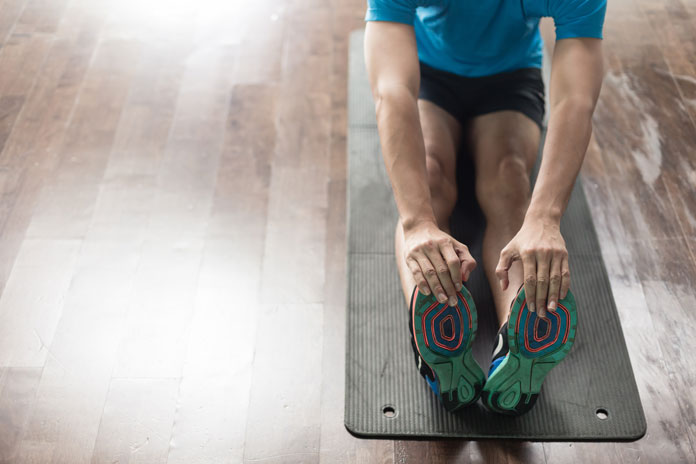
Have you ever noticed that some amateur athletes regularly do without the cooldown? Are you one of those people who sprint straight from the weight bench into the shower? Then you should urgently change something about it. As the name suggests, the cooldown is used to cool down your body. The heart rate normalizes. The danger that the circulatory system suddenly causes problems is minimized.
A cooldown doesn’t have to take a lot of time. It is perfectly sufficient to simply walk for five minutes and then do a couple of targeted stretching exercises. By stretching you prevent muscle cramps and muscle stiffness.
3. You Eat A High-Fat Meal After Exercising
As you already know, your body mainly needs carbohydrates and protein after training. If possible, the two nutrients should be supplied within the anabolic time window of two hours. Of all the macronutrients, fat takes the longest to digest.
When your body is busy digesting fat, carbohydrate, and protein absorption are delayed. As a result, the anabolic window can close even though you’ve eaten your post-workout meal on time. You can avoid this effect by eliminating greasy foods from your post-workout routine.
4. You Treat Yourself To Fast Food And Candy After Your Workout And Post Workout Routine
Surely the thought of treating yourself to something after a hard workout is tempting. However, experience has shown that many people underestimate the calorie and fat content of food. Depending on how extensively you have trained, you can ruin your training success with just one large chocolate bar.
The muscles only appear when the body fat percentage is low enough. The latter can only be achieved with a combination of exercise and nutrition. So your training is not a free ticket to stuffing your stomach with unhealthy and high-calorie food afterward. Instead, reward yourself with a massage and a healthy meal.
5. You Don't Drink Enough (Or The Wrong Thing) During Your Workout
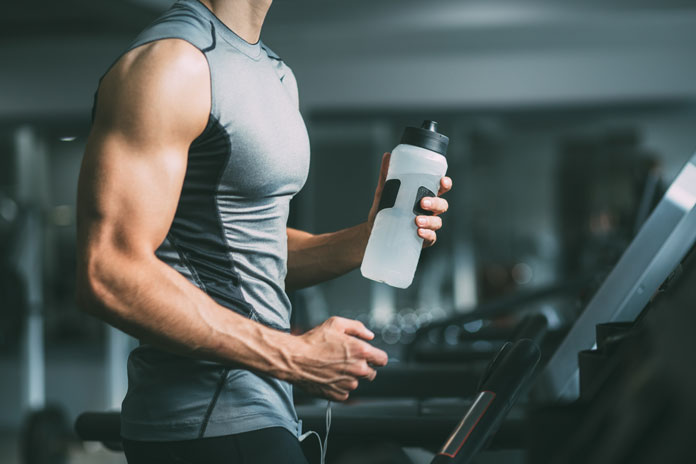
During a sweaty workout, your body loses a lot of fluid. You absolutely have to bring this back to him. This is the only way to keep your performance constant throughout the training session. If you drink too little, there can be a significant drop in performance as well as dizziness, tachycardia, and headaches. In the worst case, there is a risk of a circulatory collapse. The latter happens particularly frequently in summer temperatures.
By the way, you don’t need expensive sports drinks to supply your body with important minerals. Ordinary mineral water is perfectly adequate. If the water tastes too bland for you, you can spice it up with a few leaves of fresh mint or lemon slices as needed.
Please refrain from energy drinks or sodas! Such drinks contain a lot of calories and a lot of sugar. This is counterproductive if you want to optimize your figure.
6. You Don't Shower Or Change Your Sweaty Clothes
Some athletes like to postpone showering after training until later. However, this can have very unpleasant consequences. When you exercise, you sweat. Fresh sweat is unproblematic and also odorless. Older sweat, however, begins to smell unpleasant as it is broken down by bacteria.
Not only do these bacteria cause annoying body odor, but they can also promote skin rashes and acne. It would be extremely annoying if you put all your energy into a toned, muscular body and then had to hide it because of skin problems.
Therefore, once the cooldown is over, you go straight to the shower. It should actually be self-explanatory, but we mention it: Always have a change of clothes and a clean towel with you. It’s of little use if you take a shower but slip back into your sweaty laundry afterward.

